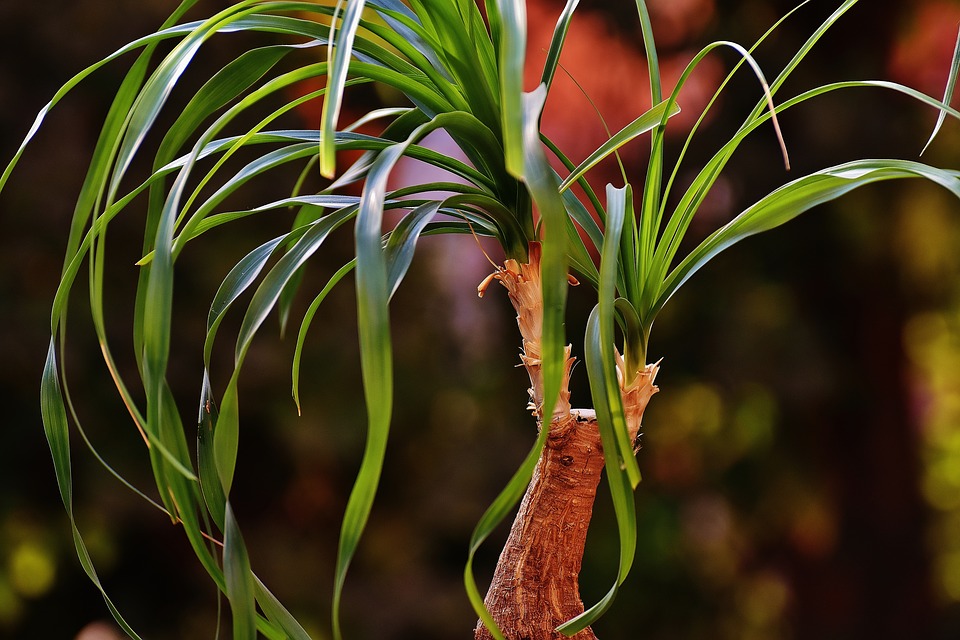A hardy type plant that is worth the investment

The ponytail palm is an amazing plant that is a native of Southeastern Mexico. These garden beauties have a unique appearance and the leaves have a tough texture. I first got introduced to these palms a few years ago as an interior plantscape designer, a part of my responsibility was to keep them growing healthy on the interior, but what I find so amazing about this plant is it is not a true palm at all but rather belongs to the Yucca family.
The ponytail palm is a slow grower so much patience is needed when growing and caring for these plants. The base of the ponytail truck is swollen because this is where the water is stored for the plant during the hot and dry season. Ponytail palms are popular for growing indoors, in this article, however, we will not only be looking at how to grow ponytails indoors but outdoors as well.
Things you must know
Planting Location
When installing ponytail palms outdoors look for a sunny location.
Soil Type
The soil type should be soil that has good drainage.
Watering Methods
When watering your ponytail ensure that the soil is more on the dry side, a little moist but not waterlogged. Overwatering will encourage root rot.
Fertilizing Methods
Ponytails can be fertilized with a liquid feed or quick-release fertilizer. Before fertilizing read and follow the manufacturer’s label because the label is the law.
Garden insect pests of ponytails
- Spider Mites
- Scales
- Mealybugs
Spider Mites, Mealybugs, and Scales cause much damage by encouraging the yellowing of the plant’s leaves. These insect pests can be controlled with the use of 1 tsp. of dish liquid to 1 quart of water in a 32 oz spray bottle. This solution should come out fine and misty when spraying get total coverage of the leaves on both the top and underside.
Allow this solution to sit for an hour and then rinse thoroughly with fresh water. Repeat this process every seven days until these insect pests are eliminated. The use of insecticidal soap or neem oil will offer help also. Read and follow the manufacturer’s label because the label is the law.
Diseases of the ponytail palm
- Stem Rot
Stem rot is a common problem with ponytail palms, signs include the plant’s stem and the base becoming very soft and the leaves turning yellow. All this is brought on by overwatering so monitor the amount of water you are giving your plant. If your plant is suffering from this issue discontinue watering and hopefully, your ponytail will bounce back.
Ideas where to install the ponytail
Here are just a few ideas where to install ponytail palms
- Can be installed as a stand-alone or specimen plant
- Looks great in a garden design
- Can be installed in containers and the containers can be placed on either side of your front door entrance
- Containers can be placed on your patio
- Looks great on your porch
Container grown ponytail palm
When potting a ponytail in a container the soil can either be a succulent potting and cacti or a soil that has good drainage. The container should have drain holes to allow water to run off. The soil should be kept somewhat on the dry side and not saturated because overwatering will cause root rot.
Fertilize your ponytail with a liquid feed fertilizer 4 times per year. Fertilize according to the manufacturer’s label, treat for garden insect pests as discussed earlier. The container should be placed in an area that gets bright indirect light.
Caring for ponytail palms indoors
It is good to bring nature on the indoors so why not add a ponytail palm or two, as an interior plantscape designer this was one of my many responsibilities. When installing these palms indoors follow the same procedures as with container-grown ponytail the only difference is because the container is indoors a saucer should be provided and placed under the container to collect the water that drains. The container should be placed near a west or south window, this will provide your palm with 4 hours of indirect sunlight.
Follow the same practices when it comes to watering, fertilizing methods, and treating garden insect pests. Keep a sharp pruner on hand to remove leaves that are damaged or dead.
Additional Information
1. When installing ponytail palm indoors ensure that the room temperature is anywhere from 60-85. Also, keep your ponytail away from air condition vents and drafts.
2. The ponytail palm can reach a height of 15 ft.
3. The ponytail palm is said to be non-toxic to humans and animals.
4. The ponytail palm is used more like a house plant than growing outdoors.
5. The ponytail palm is also known as the elephant plant.
The final word
The ponytail palm is an amazing plant that is so unique. This garden wonder that is low maintenance will surely give you a bang for your buck, I have worked with them and have never been disappointed, this is one of my favorite palms that has proven to work wonders. Bring that much-needed flavor indoors or your garden area with the ponytail palm.
About the author
Norman loves being in the garden, both at home and for his job....
he is 'Natures Little helper' being outdoors, growing his vegetables and flowers from an early age.
Now having spent over 22 years in the profession he want to give some of his knowledge to others...
his vast array of hints and tips you will find scattered over this site will help you no end growing plants in your garden.
